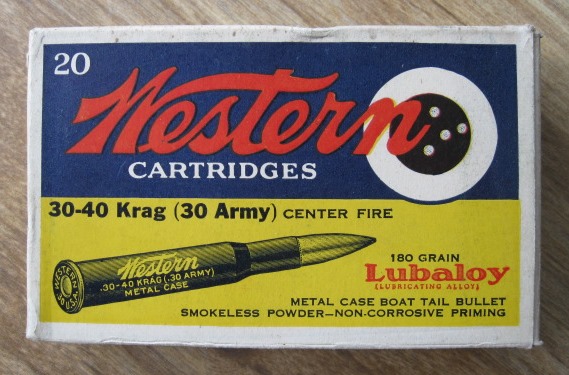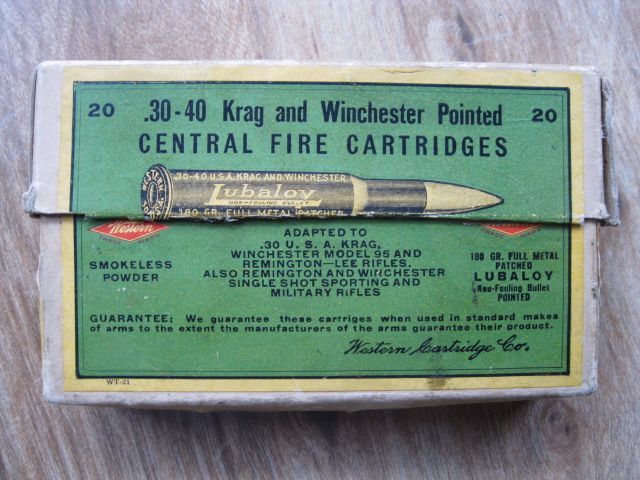Jeremy has indicated the "30" is likely a year date and his box is dated 8-30. (Maybe everything is correct).
Western Cartridge Company introduced "Lubaloy" copper alloy jackets in the 1920s. A December, 1929, American Rifleman add makes mention of Lubaloy Palma ammo.
I don't have any old .30-40 commercial ammo, but, here's an empty 'Western' box (non-corrosive primers) and probably an earlier box that touts 'non-fouling' Lubaloy bullet.




